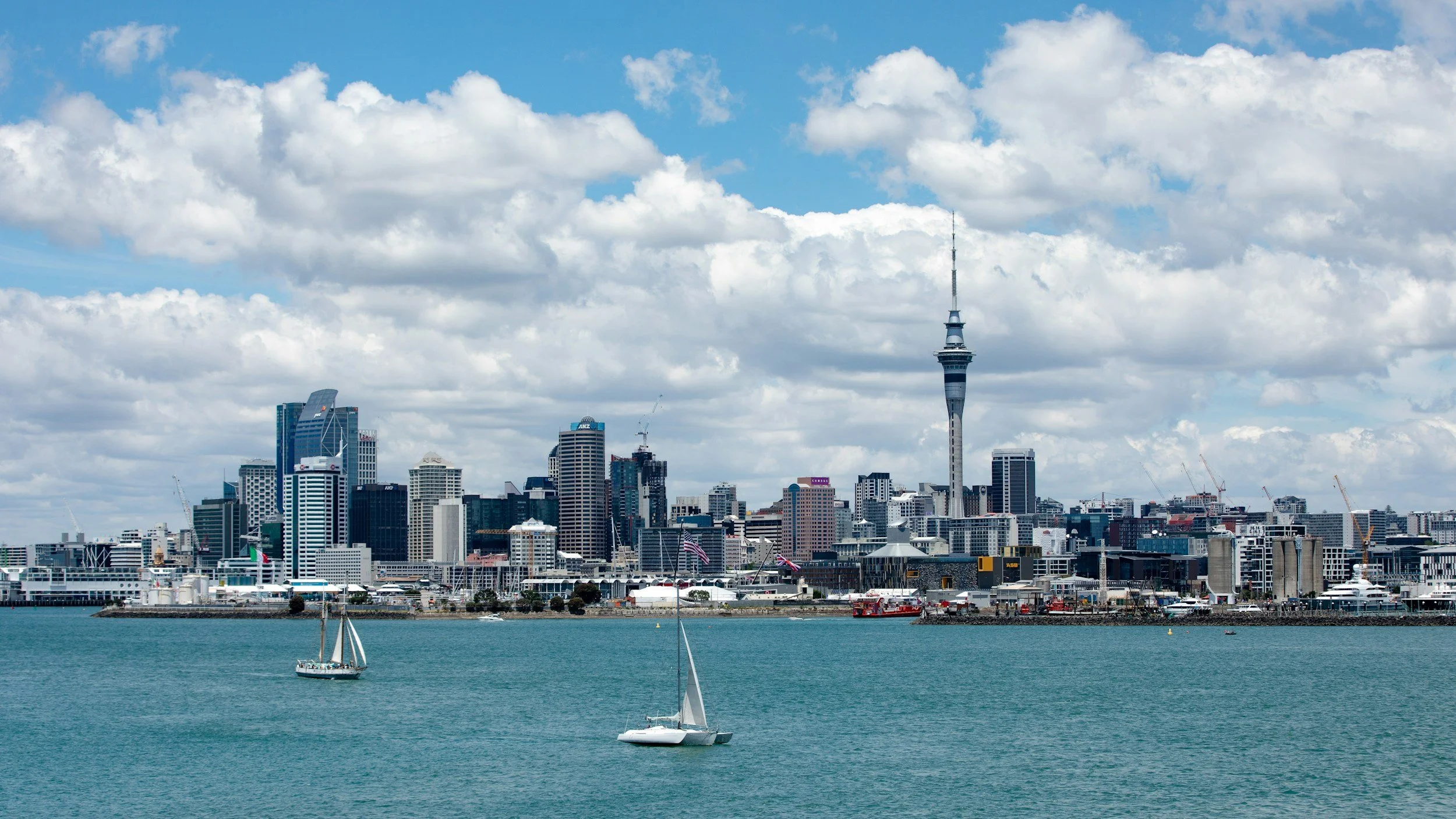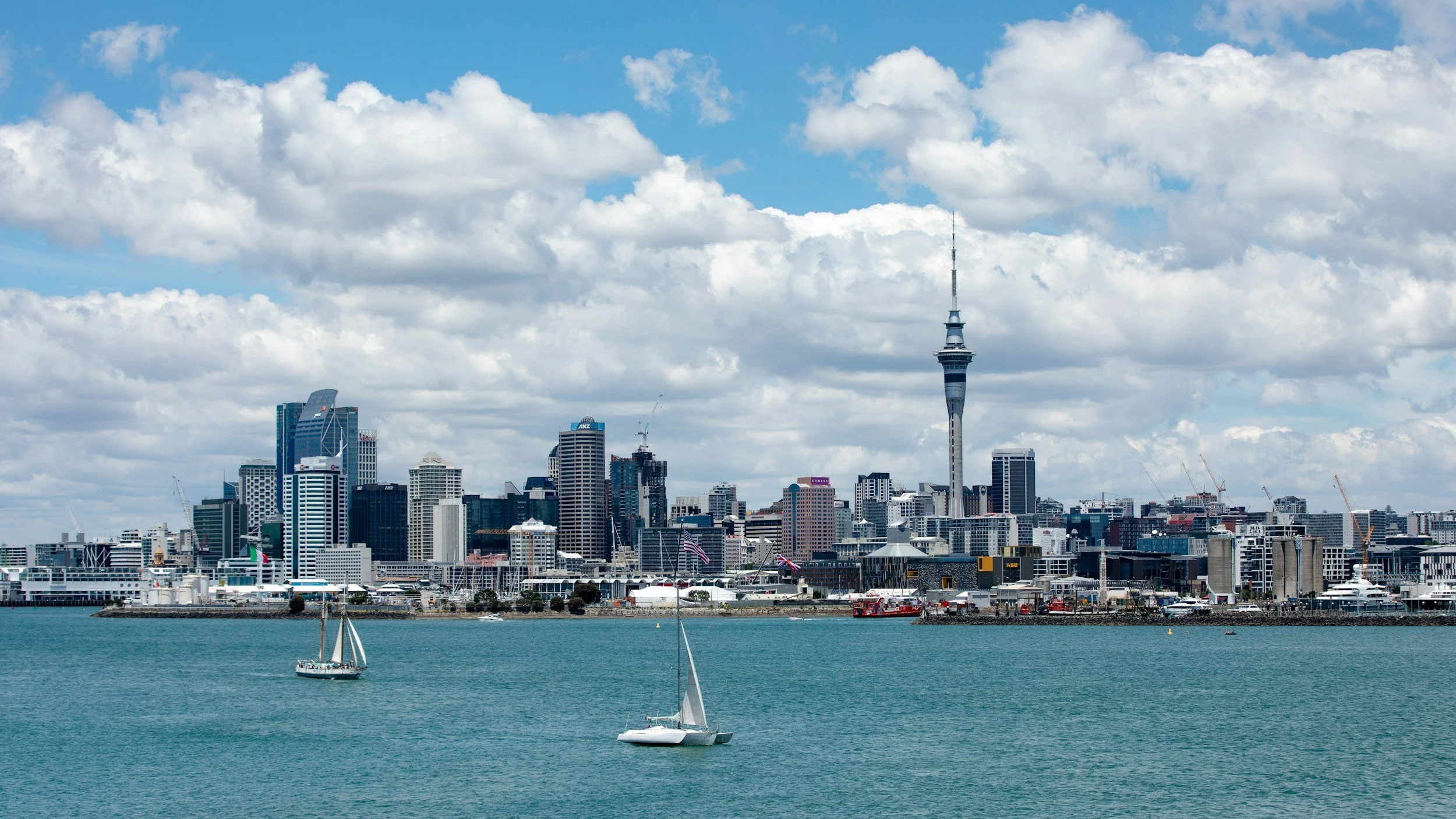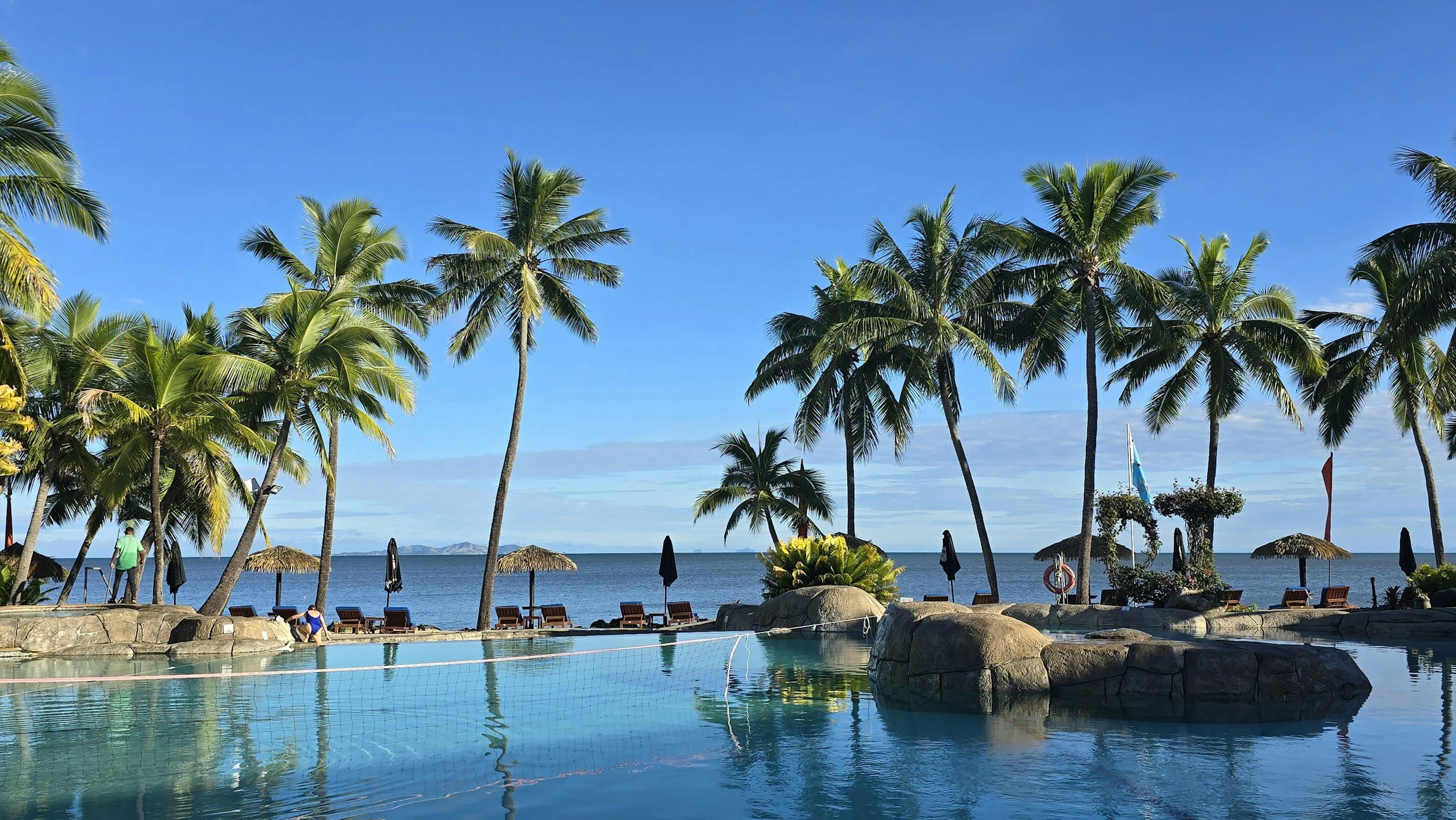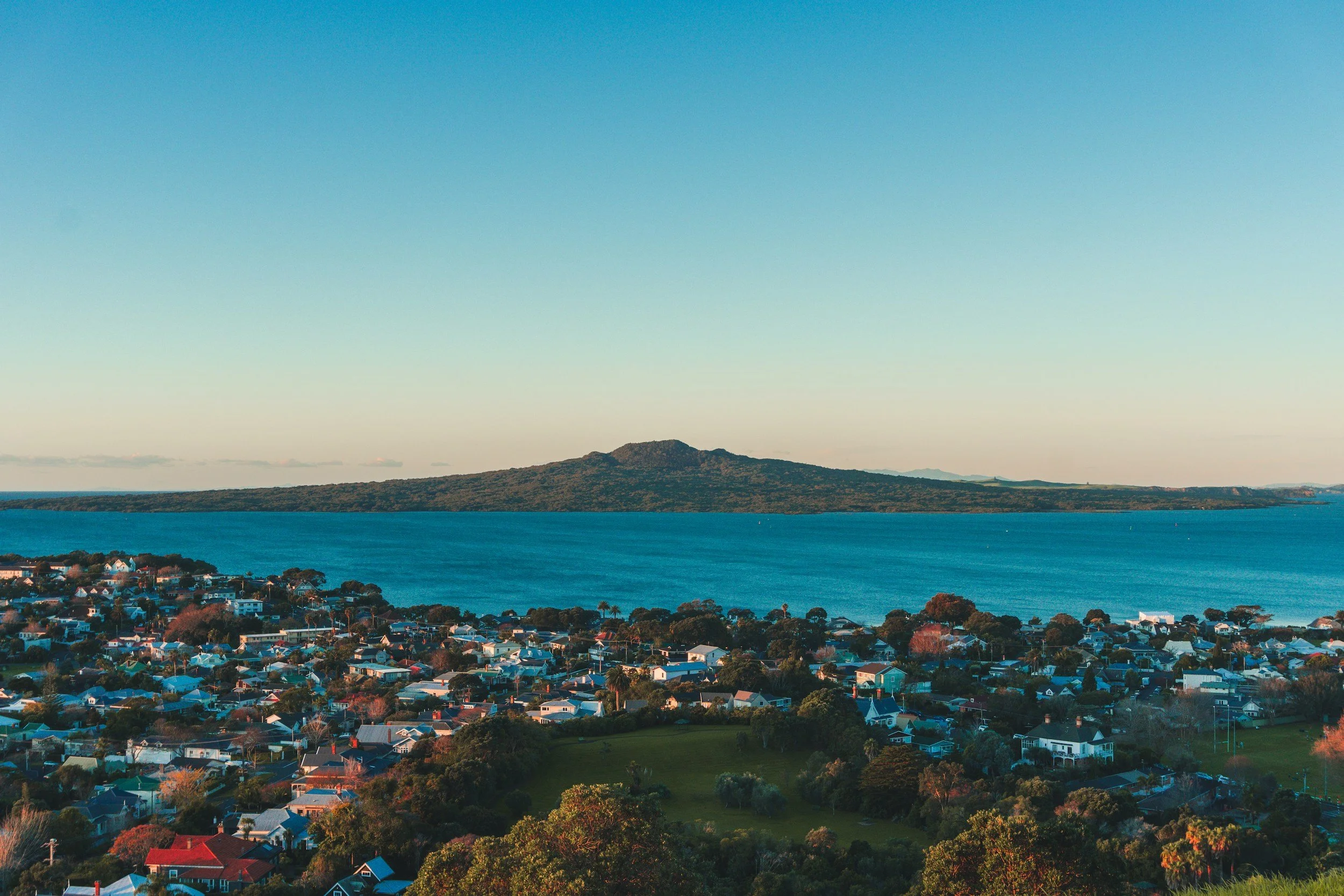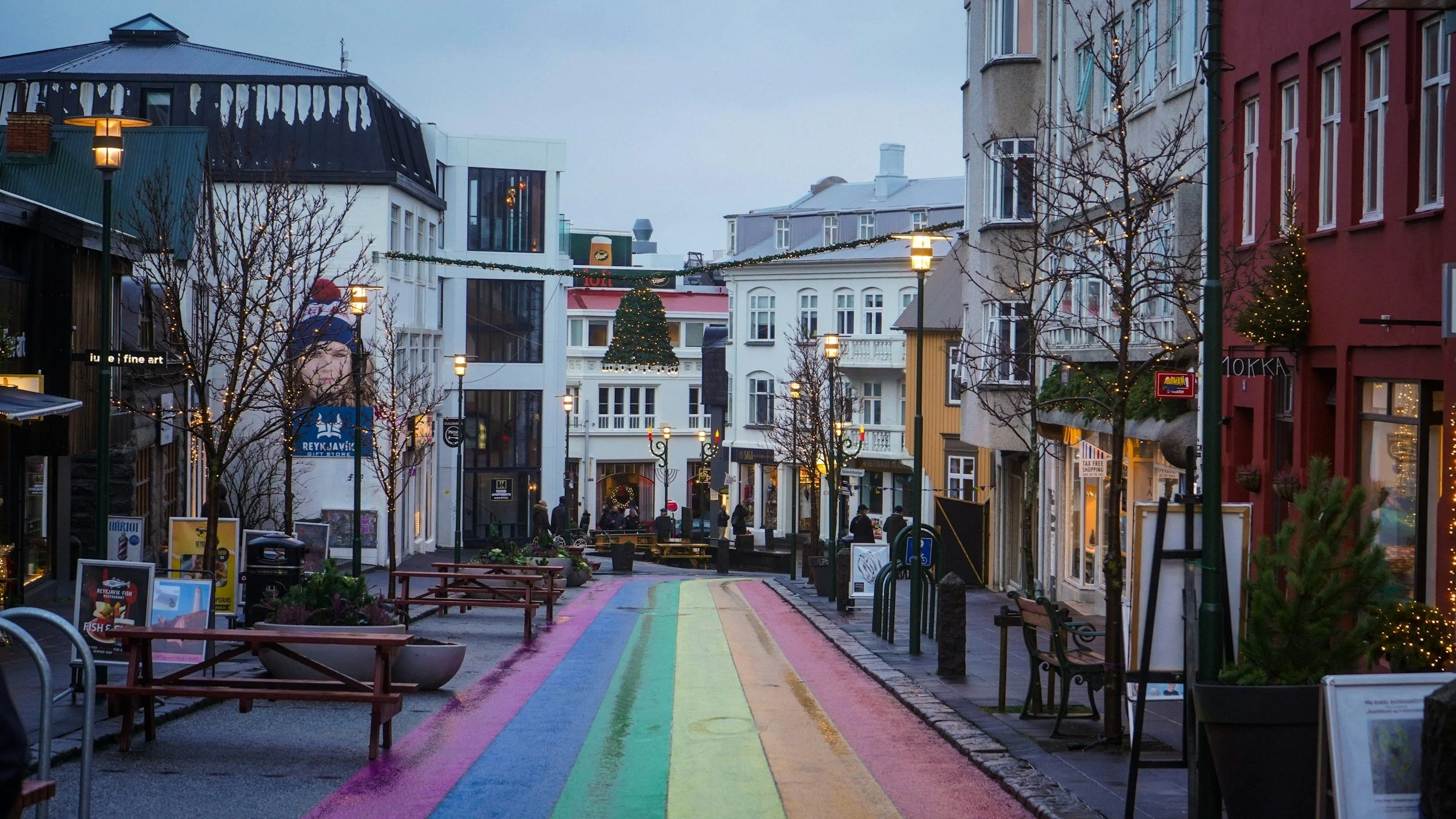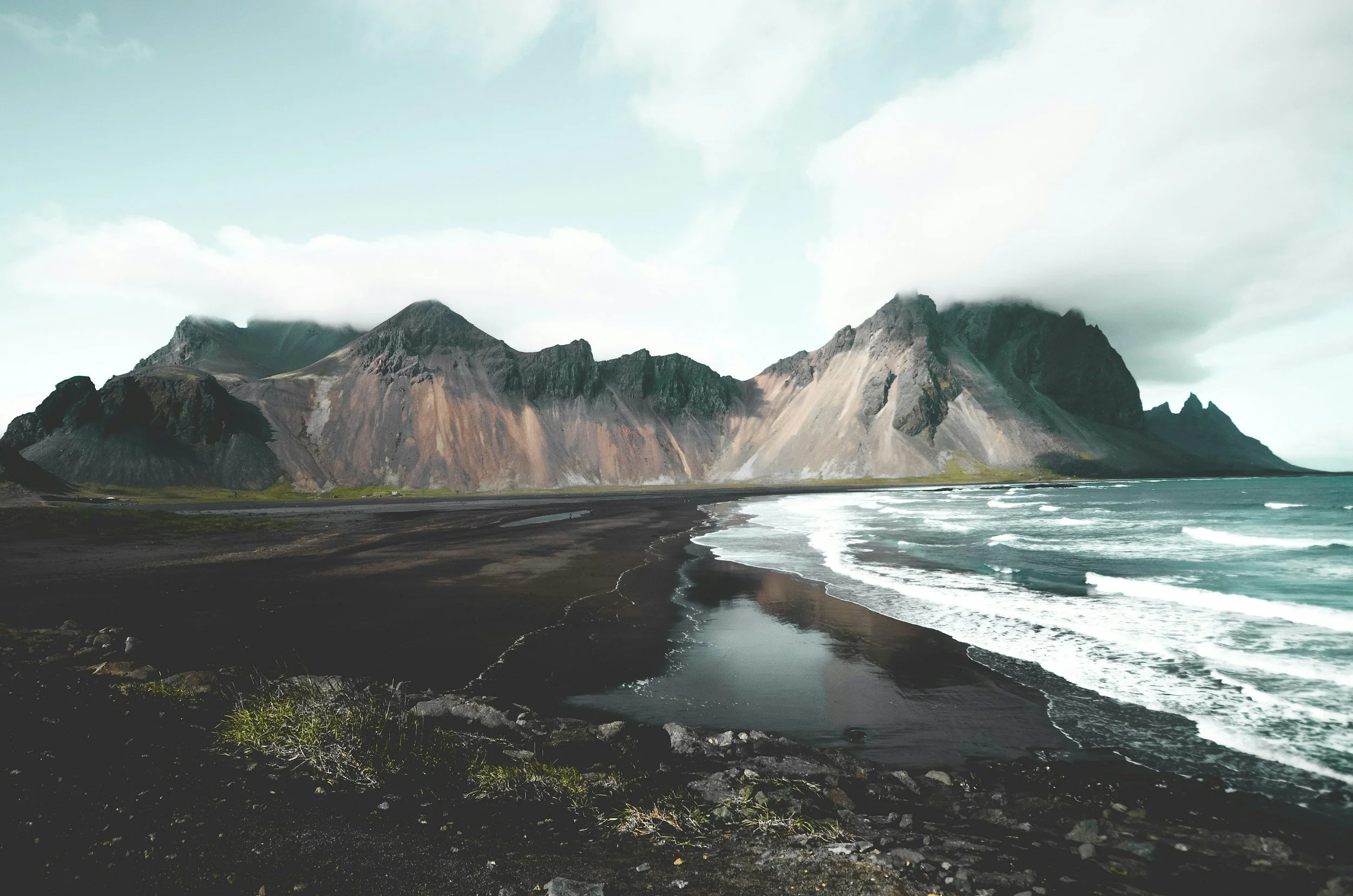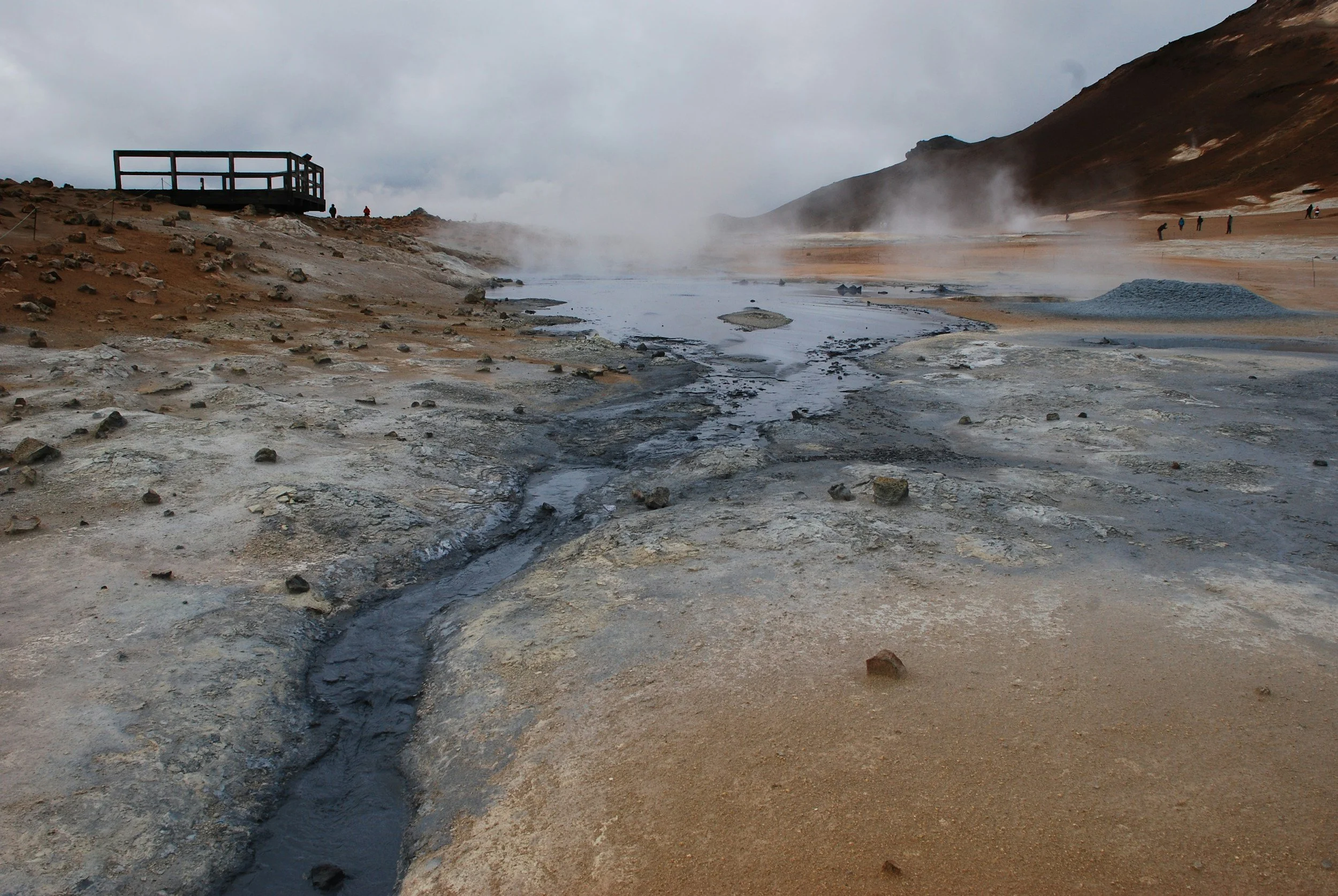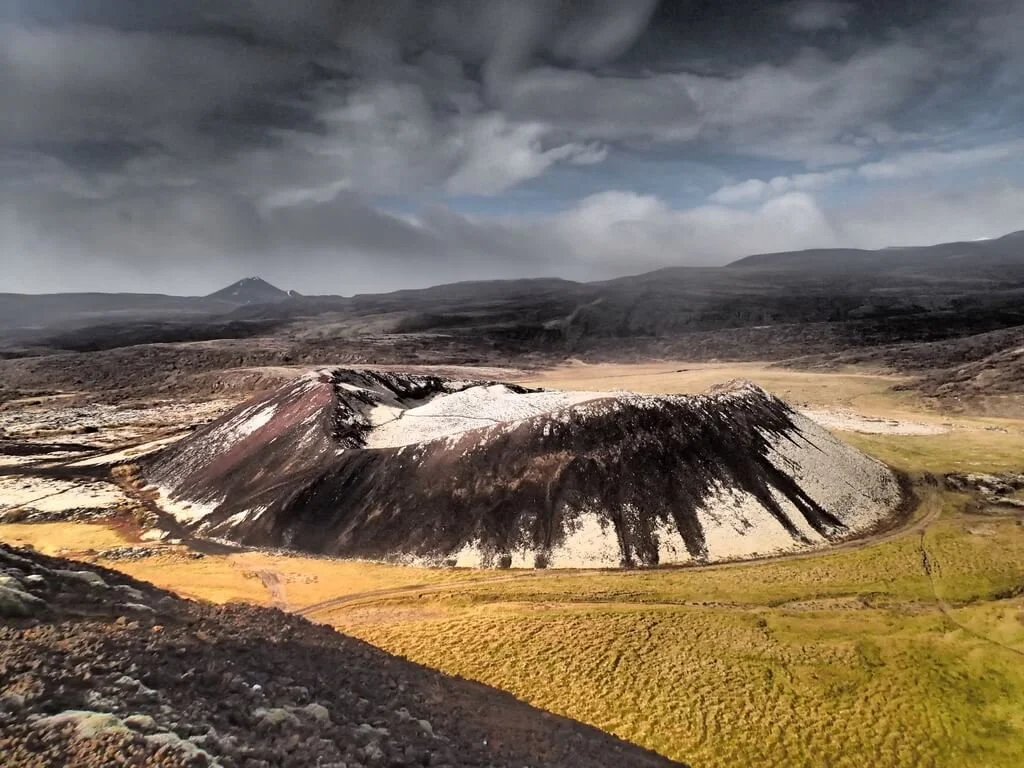10-Day South Island New Zealand Road Trip Itinerary: Scenic, Budget-Friendly & Childfree Travel Guide
New Zealand’s South Island is all about big landscapes and small-town charm — think mirror-like lakes, dramatic fiords, alpine passes, and cozy cafés. This 10-day road trip itinerary covers the best of the South Island at a relaxed pace, from Lake Wānaka views to quiet nights on Doubtful Sound, ending with a laid-back day in Christchurch.
Planning a South Island New Zealand road trip? This 10-day South Island New Zealand itinerary is packed with jaw-dropping landscapes, charming towns, and unforgettable adventures — all at a pace that works for budget-conscious, childfree travelers. From taking in the views at Lake Tekapo to cruising through the moody fiords of Doubtful Sound, this itinerary mixes iconic highlights with local gems for the perfect balance of adventure and relaxation.
We planned this 10-day South Island road trip as part of our bigger New Zealand adventure, which also included a 5-day North Island road trip and a tropical Fiji stopover.
This is part two of my two-part New Zealand series — don’t miss my 5-day North Island itinerary! Tell me in the comments: If you could road-trip anywhere in the world, would New Zealand make your top 3?
Table of Contents Show
Day 1: Travel Day
Rotorua → AKL → Christchurch
After a two-hour drive back to Auckland, we returned our rental car and hopped on a quick domestic flight to Christchurch. The whole airport process was refreshingly simple — minimal security, friendly staff, and none of the stress you’d expect back in the U.S. On arrival, we snagged the very last rental car available that day (just minutes before the depot closed) and headed straight to our hotel for dinner. It had been a long travel day, so we crashed early, excited to kick off our South Island road trip the next morning.
Day 2: Christchurch to Twizel via Lake Tekapo & Lake Pukaki
Christchurch → Lake Tekapo → Lake Pukaki → Twizel
Heading south from Christchurch, the scenery started to deliver exactly what we’d imagined the South Island to be: wide open landscapes, snow-capped peaks in the distance, and lakes so blue they looked photoshopped. We made two essential stops — Lake Tekapo and Lake Pukaki — before stocking up on groceries and ending the day in the quiet town of Twizel, our base for the next couple of nights.
Highlights:
Lake Tekapo – Home to the Church of the Good Shepherd, built in 1935 to honor the area’s pioneer families. Yes, it’s touristy with souvenir shops and cafés nearby, but the lake’s vivid turquoise color stopped us in our tracks. We lingered longer than planned, just soaking in the views. Make sure to walk onto the bridge to get the most Insta-worthy photos.
Lake Pukaki – Another glacier-fed beauty, just as vibrant as Tekapo but with far fewer people. We loved having space to ourselves here and we even braved a (very) quick dip in the chilly water… nature’s cold plunge!
Twizel – Originally constructed in the 1960s as a base for hydroelectric project workers, it’s now a peaceful spot for fishing, cycling, and exploring the nearby national parks. Our Airbnb was modern and cozy, and that night we lay in the yard counting more stars than we’ve probably seen in our lives.
Church of the Good Shepherd and Lake Tekapo
Day 3: Aoraki/Mt. Cook National Park
We devoted the day to exploring Aoraki/Mt. Cook, New Zealand’s tallest mountain. Even in autumn, the popular Hooker Valley Track was buzzing with hikers, but the alpine scenery more than made up for the crowds. After hours of walking among snowy peaks and suspension bridges, we capped off the day with a sweet reward at Sweet Moos back in Twizel.
Highlights:
Aoraki/Mt. Cook – Towering at 3,724 meters (12,218 feet), Aoraki is sacred to the Ngāi Tahu Māori, who view it as an ancestor. Standing in its shadow, we were in awe of the sheer scale of the snowy peaks surrounding us.
Hooker Valley Track – This 10 km (6.2 mile) return hike takes you across three swing bridges to a glacial lake with iconic views of Mt. Cook. Despite the crowds, it was a highlight of our trip. Along the way, we struck up a conversation with a Kiwi family and ended up chatting for nearly an hour about life in New Zealand and the U.S. — a reminder of just how warm and welcoming people can be.
Sweet Moos Ice Cream – Located in nearby Twizel, this cheerful shop serves locally made ice cream and stocks a variety of regional products. It was the perfect post-hike treat and a cozy spot to wind down after a big day outdoors.
View from Hooker Valley Track
Day 4: Arrival in Queenstown
Twizel → Queenstown
The drive from Twizel to Queenstown was one of those journeys where the scenery keeps stealing your attention. Snowy peaks, winding roads, and shimmering lakes made it hard not to stop every few kilometers for photos. By the time we rolled into Queenstown, our first priority was food — specifically the much-hyped Fergburger. After lunch, we stretched our legs with a walk through the Queenstown Gardens and then stocked up on groceries to fuel the next few days of adventures.
Highlights:
Queenstown – Originally founded during the 1860s gold rush, Queenstown has grown into New Zealand’s adventure capital. With bungee jumping, jet boating, hiking, and more, we knew the next few days here would be action-packed.
Fergburger – These legendary burgers have a cult following and are almost a rite of passage for visitors. Honestly? We found it a little overhyped and not quite worth the long wait, but it was still fun to try it once.
Queenstown Gardens – Set on a peninsula in Lake Wakatipu, this peaceful green space is perfect for an afternoon stroll. We sat in the grass, enjoyed the sunshine, and watched boats glide across the harbor.
Day 5: Milford Sound Flight & Skyline Views
Instead of tackling the long 8-hour round trip drive to Milford Sound, we splurged on a scenic flight with Air Milford. Our tiny 4-seater plane soared over glaciers, valleys, and the dramatic peaks of The Remarkables, giving us a bird’s-eye view of landscapes we’d only seen in photos. The flight alone was unforgettable — Milford Sound from the air is nothing short of magical.
Back in Queenstown, we switched gears and took the Skyline Gondola for panoramic views of Lake Wakatipu. We wrapped up the day at Kiwi Park, a conservation sanctuary where we finally saw New Zealand’s most iconic (and delightfully odd) bird up close.
Highlights:
Milford Sound/Piopiotahi – A glacier-carved fjord long known to Māori and later charted by Europeans in the early 1800s. From the air, the sheer cliffs and waterfalls looked surreal, almost like a painting.
The Remarkables – This rugged mountain range earned its name in the 1850s for being one of only a few ranges in the world that run perfectly north to south. Seeing them stretch below us from the plane was jaw-dropping.
Skyline Queenstown – The gondola climbs 450 meters (1,476 feet) above town, offering sweeping views of Queenstown, Lake Wakatipu, and the surrounding peaks. It’s a must-do for first-timers.
Kiwi Park – A conservation park dedicated to protecting endangered native wildlife. Watching kiwi birds shuffle around in the dark (they’re nocturnal) was equal parts hilarious and heartwarming — they truly are the quirkiest little creatures.
Day 6: Shotover Canyon Swing & Arrowtown
We woke up to a crisp, golden autumn day — perfect for what we had planned. First up: the Shotover Canyon Swing, where one of us leapt into a 60-meter (197-foot) freefall while the other… chickened out (again). The experience was equal parts terrifying and exhilarating, and a true Queenstown bucket list activity.
Afterward, we slowed things down in Arrowtown, a charming gold-mining village from the 1860s. We strolled its tree-lined streets, admired heritage buildings, and grabbed savory pies and a sausage roll from the local bakery before heading back to Queenstown. The day ended on a sweet note with a scoop of hokey pokey ice cream at Patagonia Chocolates.
Highlights:
Shotover Canyon Swing – Opened in 2002, this swing launches you into a 60m (197ft) freefall before swinging out over the canyon. It’s also the home of the famous Shotover Jet boats. I bailed thanks to my fear of heights, but my husband took the plunge and was equal parts exhilarated and terrified (and we have hilarious video footage to prove it).
Arrowtown – A preserved 19th-century gold-mining town, filled with historic cottages, leafy parks, and boutique shops. It felt like stepping back in time and made for a gorgeous fall walk.
Patagonia Chocolates – Founded by an Argentine couple, this spot is beloved for its artisan chocolates and ice cream. The hokey pokey flavor is a New Zealand classic featuring vanilla ice cream dotted with crunchy honeycomb toffee.
Day 7: Doubtful Sound Overnight Cruise
Queenstown → Manapouri
From Queenstown, we made the drive south to the quiet lakeside town of Manapouri, the gateway to Fiordland National Park. Here, we began our overnight cruise into Doubtful Sound, a fiord three times longer than Milford and far less visited — making it feel wonderfully remote. With towering cliffs, cascading waterfalls, and no cellphone service, it was the most peaceful part of our trip.
The adventure began with a scenic cruise across Lake Manapouri, followed by a coach ride over the Wilmot Pass, where dense rainforest opened to jaw-dropping views of the fiords. At Deep Cove, we boarded RealNZ’s Fiordland Navigator, a ship designed with old-world charm but plenty of modern comforts.
Gliding through the still waters of Doubtful Sound was surreal. Even in the rain, the landscape felt otherworldly — low clouds drifted through the valleys, waterfalls poured down the cliffs, and the whole fiord had a dramatic, moody beauty. As the sun set, the crew served up a three-course dinner paired with local wines, and we swapped stories with fellow travelers.
The next morning, we dropped anchor in a sheltered cove where guests could kayak, hop in a tender boat, or even take a dip in the icy fiord. We opted to do all three and enjoyed them all — even the plunge into the 50 °F water!
Would you choose the adrenaline rush of Queenstown or the serenity of Doubtful Sound? Drop your pick below!
Highlights:
Manapouri – A quiet town on the shores of Lake Manapouri, known as the gateway to Fiordland. Its name comes from the lake, which means “sorrowing heart” in Māori.
Doubtful Sound/Patea – Charted by Captain Cook in 1770, this remote fiord is three times longer than Milford and far less visited. Its Māori name, Patea, means “the place of silence” — and it truly lives up to it.
RealNZ Overnight Cruise – Eco-conscious and intimate, the cruise includes a lake crossing, rainforest drive, and an unforgettable night aboard the Fiordland Navigator. With misty rain, towering waterfalls, and moments of pure stillness, it was easily one of the most memorable parts of our New Zealand trip.
Doubtful Sound/Patea
Day 8: Arrival in Wānaka
Manapouri → Wānaka
After disembarking from the cruise around midday, we set off on the 3-hour drive to Wānaka. The winding roads revealed more of the South Island’s dramatic landscapes — misty mountains, glacial rivers, and rolling valleys — making the journey feel like part of the adventure. Once in Wānaka, we stretched our legs with a stroll along the main drag, taking in the cozy cafés, boutique shops, and fall colors. Dinner at Big Fig was exactly what we needed: hearty, slow-cooked, mezze-style dishes that fueled us for the night. Afterwards, we retreated to our Airbnb, ready to recharge for another long day of travel.
Day 9: Return to Christchurch
Wānaka → Christchurch
We started the day early at the iconic Wānaka Tree, its branches reflected perfectly in the still waters of Lake Wānaka with snowcapped mountains rising up in the background. The drive back to Christchurch took about five hours, but the South Island’s scenery made the time fly by. Snow-capped peaks rose in the distance, glacial-fed rivers snaked through the valleys, and golden tussock-covered hills rolled past our windows. Every corner brought another stunning vista, and we found ourselves pulling over a few times to stretch our legs and soak it all in. By the time we rolled into Christchurch, the long drive felt more like a scenic journey than a chore, and we were ready to relax before our final day exploring the city.
Wānaka Tree
Day 10: Exploring Christchurch and Departure
Our final morning in New Zealand started with a leisurely breakfast before heading out to explore Christchurch. The city, known as the “Garden City,” is a blend of English heritage, modern rebuilds, and vibrant public spaces. We took the Christchurch Gondola up to the hilltop for sweeping views of the city, the braided Avon River, and the distant Southern Alps — a perfect perspective on our South Island journey.
Back in the city, we wandered through the New Regent Street Quarter, a charming stretch of pastel-colored buildings, boutique shops, and cafés, where we stopped for a New Zealand favorite — real fruit ice cream. It was the perfect way to cap off ten days of epic landscapes, winding roads, and small-town charm. Soon after, we headed to the airport, still marveling at everything we had seen — from misty fiords to turquoise lakes — before catching our long flight home.
Highlights:
Christchurch Gondola – Ride 450 meters (1,476 feet) above the city for sweeping panoramic views of the Southern Alps, Christchurch’s cityscape, and the braided Avon River. At the summit, the viewing area includes interesting historical displays about the region and its early settlement.
New Regent Street Quarter – This historic street is lined with pastel-colored buildings, boutique shops, and cozy cafés. It’s perfect for a leisurely stroll, people-watching, and enjoying some locally made treats along the way.
Real Fruit Ice Cream – Creamy ice cream made from fresh, locally sourced fruits, bursting with natural flavor. A refreshing and authentic Kiwi treat that was the perfect way to cap off our South Island adventure.
Childfree Travel Tips for South Island New Zealand
Traveling New Zealand’s South Island without kids gives you a lot of freedom — both in how you plan your days and the types of experiences you can enjoy. Here are a few ways we leaned into that flexibility on our trip:
Stay Flexible with Accommodations. Instead of booking family-friendly hotels, we chose Airbnbs and smaller guesthouses with kitchens and cozy vibes. It allowed us to cook when we felt like it and save money for splurge activities.
Choose Activities That Shine Without Kids. Overnight cruises on Doubtful Sound, late-night stargazing in Twizel, adrenaline-packed adventures in Queenstown, and long scenic hikes are all best enjoyed when you’re not juggling nap schedules or early bedtimes.
Seek Out Quieter Alternatives. Popular spots like Milford Sound and Lake Tekapo can feel crowded. By choosing Doubtful Sound over Milford, or visiting Lake Pukaki instead of just Tekapo, we found peaceful, scenic experiences without the rush.
Build in Spontaneity. Without a rigid schedule, we could linger longer at viewpoints, take detours for real fruit ice cream stands, or stop in tiny towns just because they looked inviting. Some of the best moments of our trip weren’t even planned.
Costs & Budget Tips
Traveling in New Zealand isn’t exactly cheap, but if you’re coming from the U.S., the favorable exchange rate helps stretch your dollars further. Expect to spend more in hubs like Queenstown and Wānaka, especially on activities (adrenaline adventures don’t come cheap!). That said, food and fuel are reasonable, and self-catering with grocery store finds can save a ton. Splurging on one or two bucket-list experiences — like a Doubtful Sound cruise or a canyon swing — feels much more manageable thanks to the currency conversion rate.
Best Time to Visit
New Zealand’s South Island shines year-round, but shoulder seasons (spring: September–November, and fall: March–May) are especially rewarding. You’ll enjoy fewer crowds, better accommodation rates, and landscapes at their most dramatic — spring brings wildflowers and baby lambs, while fall paints the trees in golden hues. Summer (December–February) has the best weather but the biggest crowds, while winter (June–August) is perfect for skiing and snow sports in Queenstown and Wānaka.
Final Thoughts
Our South Island New Zealand road trip was a perfect mix of jaw-dropping scenery, charming towns, and memorable experiences. Whether you’re hiking to glacial lakes, sipping coffee by a historic street, or watching waterfalls tumble into fiords, it’s impossible not to fall in love with this part of the world.
If you’re visiting both islands, don’t miss my North Island road trip itinerary for the perfect starting point, and check out my Fiji stopover guide for some pre-adventure relaxation.
What’s your favorite part about traveling childfree — flexibility, spontaneity, or simply the peace and quiet? Share your thoughts below — I read every comment!
5-Day North Island New Zealand Itinerary (Auckland, Hobbiton & Rotorua)
Discover the best of New Zealand’s North Island in just 5 days — from Auckland’s city vibe and Rangitoto’s volcanic trails to Hobbiton’s movie magic and Rotorua’s geothermal wonders. A relaxed, budget-conscious itinerary designed for childfree travelers who want nature, culture, and adventure without the rush.
Auckland skyline
New Zealand has been on our bucket list forever — a dream destination we weren’t sure we’d ever actually get to visit. But we made it happen, and the North Island’s stunning, pristine landscapes completely blew us away. From Auckland’s vibrant city life to volcanic islands, movie-famous Hobbiton, and the geothermal wonders of Rotorua, this 5-day itinerary packs in a perfect blend of nature, culture, and relaxation.
Designed with childfree travelers in mind, this trip balances adventure and downtime so you can explore at your own pace without feeling rushed or tied to a schedule. Whether you’re craving peaceful hot springs, scenic hikes, or foodie nights at markets, this itinerary gives you a taste of everything that makes the North Island so special.
This is part one of my two-part New Zealand series — be sure to check out my 10-day South Island itinerary for more epic adventures!
Table of Contents Show
Day 1 – Arrival in Auckland (via Fiji)
We touched down in Fiji early in the morning after a very long flight, knowing we had a full day to fill before our evening connection to Auckland. To make the most of it (and avoid feeling like airport zombies), we booked a day room at the Fiji Gateway Hotel, just a quick drive from the terminal. It turned out to be the perfect mini layover — a peaceful poolside escape surrounded by lush tropical landscaping, with a convenient on-site restaurant serving delicious meals and staff who couldn’t have been more friendly. (If you’re planning a stop here yourself, check out my guide on how to do a layover in Fiji for tips and ideas.)
After a leisurely day of swimming, napping, and recovering from the jet lag, we headed back to the airport for a relaxing stint in the Fiji Airways lounge before boarding our flight to Auckland. We landed just before midnight and navigated through customs, caught an Uber, and finally checked into our hotel around 1am. We crashed hard after two very long days of travel, but we were excited to start our New Zealand adventure (after a good night’s sleep of course).
Day 2 – Auckland City Highlights
Auckland is often the first stop for many visitors to New Zealand, and it makes a great base for exploring both the city and nearby islands. We kept our first full day fairly relaxed, mixing in a bit of history, some casual sightseeing, and plenty of good food. If you’re looking for things to do in Auckland, there’s plenty of great options to choose from.
Highlights
Auckland War Memorial Museum – More than just military history, this museum offers a deep dive into New Zealand’s cultural heritage. We especially loved the Polynesian and Māori exhibits, which gave us a richer understanding of the country’s history before we set off exploring.
Queen Street & the Waterfront – We took a leisurely walk through Auckland’s main shopping street down to the harbor. Street performers, bustling cafes, and views across the water make it an easy way to soak up the city vibe.
Auckland Night Market – A budget-friendly dinner option with an incredible range of food stalls. We went for a mix of Asian dishes, and everything we tried was packed with flavor. Plus, the people-watching was just as good as the food.
Day 3 – Rangitoto Island & Skywalk
Rangitoto Island is one of Auckland’s most recognizable landmarks — a volcanic cone rising from the Hauraki Gulf, formed by an eruption just 600 years ago. It’s an easy and affordable day trip from the city, and we paired it with one of Auckland’s most thrilling attractions for a day that balanced nature and adrenaline.
Highlights
Ferry to Rangitoto Island – A quick 25-minute ride from downtown Auckland, offering great views of the city skyline as you head toward the island’s black lava fields.
Rangitoto Summit Track – A moderately challenging 4-mile hike to the island’s highest point, where panoramic views stretch across the gulf. We loved the otherworldly feel of the volcanic terrain, dotted with pohutukawa trees. There are also caves that you can explore if you’re feeling extra adventurous (and aren’t claustrophobic).
Auckland Skywalk – Harnessed in but fully exposed to the elements, you walk the outer rim of the Sky Tower — 192 meters (~600 feet) above the ground. It’s not a bungee jump, but the adrenaline hit is real. Full disclosure here — I chickened out as I have a very real fear of heights, but my husband had a blast!
View of Rangitoto
Day 4 – Hobbiton & Drive to Rotorua
No trip to New Zealand’s North Island feels complete without a little Lord of the Rings magic. We started the day with a visit to Hobbiton before making the scenic drive to Rotorua — a geothermal wonderland that would be our base for the next couple of days.
Highlights
Pick Up Rental Car at Auckland Airport – We opted to collect our car at the airport for an easy start to the day and a quick getaway toward Hobbiton.
Hobbiton Movie Set Tour – Even if you’re not a Lord of the Rings superfan, it’s hard not to be impressed by the attention to detail on these Hobbiton tours. The lush green hills, colorful hobbit holes, and the famous Party Tree make it feel like you’ve stepped straight into Middle-earth. We ended the tour at the Green Dragon Inn with a complimentary drink — a fun touch. And yes, we watched all of the LOTR films (the very lengthy extended versions) before we came.
Scenic Drive to Rotorua – Winding roads, rolling farmland, and small-town charm made the two-hour trip fly by.
Grocery Shopping in Rotorua – Stocking up on a few easy meals and snacks helped us keep costs down and meant we could hit the road early for the next day’s adventures.
Hobbiton
Day 5 – Rotorua Adventures
Rotorua is famous for its geothermal activity, natural hot springs, and unique blend of adventure and relaxation. We spent our final day on the North Island soaking in mineral pools, enjoying sweeping views from above the city, and walking among towering redwoods.
Highlights
Polynesian Spa – We booked a morning soak in their lakefront mineral pools, which are rich in therapeutic minerals and offer peaceful views over Lake Rotorua. It was the perfect slow start to the day.
Skyline Rotorua – A gondola ride takes you to a hilltop with panoramic views of Rotorua and the surrounding countryside. We took a stroll on the scenic nature trails to listen to the sounds of the native birds and take in the views. New Zealand is home to nearly 100 endemic species of birds (which means that these birds do not exist anywhere else in the world — crazy!).
Patrick’s Pies Goldstar Bakery — Savory pies are a beloved British culinary tradition that has deeply influenced New Zealand’s food culture. Patrick’s Pies continue this legacy with hearty, flaky pastries filled with classic flavors like mince and cheese or chicken and mushroom. Honestly, we were a bit underwhelmed (as we were with Kiwi food in general), but their ginger crunch dessert was incredible.
Redwoods Whakarewarewa Forest – A tranquil escape just minutes from the city center. Walking beneath these towering California redwoods felt both surreal and grounding, and the forest’s cool shade was a welcome break from the midday sun.
Kuirau Park – A free, open-air geothermal area right in town, complete with steaming vents, bubbling mud pools, and foot-soaking baths. It’s an easy and budget-friendly way to experience Rotorua’s geothermal activity up close.
Tips for a 5-Day North Island New Zealand Itinerary
Traveling childfree means more freedom to enjoy late nights at markets, longer hikes without rushing, and quiet moments in spas and nature — this itinerary embraces that flexibility.
Keep your home bases simple. Staying two nights each in Auckland and Rotorua means less packing and more exploring.
Book key experiences in advance. Hobbiton and the Polynesian Spa can sell out, especially in peak seasons.
Mix free and paid activities. Balance your budget by combining cost-free geothermal parks and forest walks with ticketed tours and attractions.
Consider a rental car for flexibility. Picking up a car at Auckland Airport made our Hobbiton and Rotorua drives smooth and stress-free.
Use ferries for island day trips. Rangitoto Island is a quick, affordable ferry ride from Auckland’s city center — and a must for volcanic landscapes and great views.
Grocery shop when you can. It helps save on meals and lets you customize your snacks and picnic lunches during day trips.
Getting Around the North Island
Getting around New Zealand’s North Island is straightforward and flexible, especially for childfree travelers who value independence and a relaxed pace. Renting a car is highly recommended — it gives you freedom to explore scenic routes, stop at hidden gems, and manage your own schedule. We picked up our rental at Auckland Airport, which made starting the Hobbiton and Rotorua legs of our trip hassle-free.
If you prefer not to drive, Auckland has a reliable public transport system, including buses, trains, and ferries — perfect for city and island day trips like Rangitoto. Rotorua also offers local buses and plenty of rideshare options for convenient short trips.
Final Thoughts
Five days on New Zealand’s North Island is just enough to get a taste of its variety — from Auckland’s buzzing city center to volcanic hikes, movie magic at Hobbiton, and Rotorua’s geothermal wonders. We kept our pace moderate, focused on experiences that balanced adventure with relaxation, and still managed to see a lot in a short time. If have more time to spend, you could easily add on the Coromandel Peninsula or Lake Taupō, but this short itinerary proves you don’t need weeks to enjoy some of the island’s best highlights.
For more New Zealand travel inspiration, check out my detailed 10-day South Island itinerary, and if you’re planning your trip with a Fiji layover, don’t miss my guide on how to make the most of that stop.
Have you been to the North Island? What would you add to this 5-day itinerary? Drop your thoughts, tips, or must-do recommendations in the comments — I’d love to hear them.
7-Day Iceland Ring Road Itinerary (Childfree & Budget-Friendly)
Ready to take on Iceland’s wild landscapes with maximum flexibility? This detailed 7-day Ring Road itinerary shares exactly how we explored the entire country—on a tight budget, without kids, and with plenty of spontaneity. From waterfalls to volcanoes (and way too many gas station hot dogs), this guide is for adventurous, independent travelers who don’t mind a little rain—or a lot of driving.
Iceland had been calling to us for years. We were instantly drawn to its rugged landscapes, moody weather, and quiet solitude and couldn’t get it out of our minds. After what felt like years of planning, we finally made it happen.
We were in our early 30s, running on granola bars, ramen noodles, and way too much ambition. This wasn’t a luxe getaway—it was a low-budget, pack-your-own-snacks kind of trip. We didn’t have much to spend, but we were determined to see as much of Iceland as humanly possible in one week.
No kids. No rigid plans. Just us, our comically under-equipped VW Golf, and a lot of weather.
This post is our real 7-day Iceland itinerary—complete with the stops, the lessons, and a glimpse into what it’s like to take on this wild country childfree. It’s fast-paced, but totally doable if you’ve got the stamina (and a decent rain jacket).
Table of Contents Show
Day 1: Arrival + Reykjavík
KEF Airport → Reykjavík
After a long red-eye flight and very little sleep, we landed at Keflavík International Airport, picked up our rental car, and sleepily made the 50-minute drive to Reykjavík. When we arrived, we immediately hit the streets and began exploring because 1) We couldn’t check into our hotel until the afternoon and 2) The jet lag was so real and we knew we’d be toast if we stopped moving. We wandered wherever we felt like—no agenda, no schedules, just chasing warm drinks and cozy corners to warm up in. Reykjavík is perfect when you can travel light, both literally and figuratively.
Hallgrímskirkja: One of the most iconic landmarks in Reykjavík, this towering Lutheran church is inspired by Iceland’s basalt columns. Visitors can take an elevator to the top for sweeping views of the city and surrounding mountains. We were stunned by its unique architecture!
Sólfar (Sun Voyager): A striking steel sculpture located on the waterfront, designed to represent a dreamboat and an ode to the sun. It's a popular photo stop, especially at sunrise or sunset.
Harpa Concert Hall: A modern architectural gem made of geometric glass panels that reflect the changing light. It hosts concerts and events, but is also open to the public for exploring and enjoying the harbor views. We marveled at the unique design of the interior staircases.
Laugavegur Street: The main shopping and dining street in Reykjavík, lined with boutiques, souvenir shops, cafes, and bars. It’s the best place to get a feel for the city’s culture and do some people-watching.
Skólavörðustígur (Rainbow Street): One of Reykjavík’s most photographed spots—a vibrant, rainbow-painted road leading up to Hallgrímskirkja. It’s lined with shops and cafes, making it a fun (and colorful) place to stroll or snap a few photos.
Skólavörðustígur (Rainbow Street)—A celebration of Reykjavík Pride.
Day 2: Golden Circle + Hella
Reykjavík → Þingvellir → Haukadalur → Gullfoss → Hella
Early the next morning, we enjoyed a quick European-style breakfast at our hotel and then hit the road toward the first stop on our Iceland Ring Road itinerary: The Golden Circle. The Golden Circle is a popular 300-kilometer (190-mile) loop that includes Þingvellir National Park, Haukadalur Geothermal Area, and Gullfoss Waterfall. It’s the most visited part of Iceland for a reason—the natural beauty is simply unmatched. The sights are stunning, but we were not prepared for the sheer number of tour buses and selfie sticks we encountered.
Þingvellir National Park: A UNESCO World Heritage Site where the North American and Eurasian tectonic plates meet. It’s also the historic site of Iceland’s first parliament, and features dramatic cliffs, waterfalls, and walking trails. My husband braved the Silfra fissure with a snorkel while I took a scenic drive. Both were stunning!
Haukadalur Geothermal Area: A geothermal valley home to Iceland’s most famous geysers, including Strokkur, which erupts every 5–10 minutes. The area also features bubbling mud pots and steaming vents surrounded by walking paths.
Gullfoss Waterfall: One of Iceland’s most iconic and powerful waterfalls, Gullfoss plunges in two dramatic stages into a rugged canyon. There are multiple viewing platforms, and on sunny days you’ll often catch rainbows in the mist.
Hella: Our home for the night. One of our favorite affordable eats from the trip was the Icelandic hot dogs we got from a gas station—cheap, surprisingly delicious, and perfect after a long day of driving.
Day 3: South Coast
Hella → Seljalandsfoss → Skógafoss → Reynisfjara → Svartifoss → Jökulsárlón → Höfn
From waterfalls to glaciers, this stretch of our 7-day Ring Road itinerary packed in some of the most jaw-dropping scenery of the trip. We covered a lot of ground in one day, but the weather showed up for us—mostly sunny, warm(ish), and clear enough to see every dramatic cliff and coastline. These are the highlights, in the order we hit them, and every single one was worth the stop.
Seljalandsfoss: One of Iceland’s most unique waterfalls, where you can walk behind the cascade for a 360° view of the falls and surrounding cliffs. Bring a rain jacket—it’s misty but unforgettable.
Skógafoss: A massive, 60-meter waterfall that’s both powerful and photogenic. On sunny days, the spray often creates vivid rainbows at its base. We raced up the stairs to the top of the waterfall to take photos before the droves of tourists arrived and it was well worth the workout.
Reynisfjara Beach: A black sand beach near Vík known for its dramatic basalt columns, sea stacks (Reynisdrangar), and dangerously strong waves. We were astounded by the natural beauty of this iconic coastal landscape.
Svartifoss: Located in Vatnajökull National Park, this waterfall is framed by dark basalt columns and reachable via a moderate hike. It’s a rewarding stop for both the scenery and the geology.
Jökulsárlón Glacier Lagoon + Diamond Beach: A surreal glacial lagoon filled with floating icebergs, often drifting out to sea. Just across the road, Diamond Beach is where pieces of ice wash ashore, glittering like gems on the black sand.
Höfn: A small fishing town in southeast Iceland, known for its views of Vatnajökull glacier and local lobster dishes. It’s a good overnight stop with a few restaurants and gas stations—the burger joint we went to was pricey, but totally hit the spot.
Day 4: Southeast
Höfn → Vestrahorn → Búlandstindur → Lagarfljót → Hengifoss → Egilsstaðir
This stretch of the trip involved fewer miles but just as many sights. We took a sizable detour inland to visit Lagarfljót and hike to Hengifoss. It felt like a different side of Iceland: quieter, wilder, and less visited. The weather decided we’d had enough sunshine and hit us with a sudden shift to winter with clouds and freezing rain, but we didn’t have to worry about keeping anyone dry or entertained. Just us, our rain jackets, and the road heading north.
Vestrahorn: A striking, jagged mountain on the Stokksnes Peninsula, known for its dark sand dunes and mirror-like reflections on calm days. It’s a photographer’s dream and one of the most cinematic spots in Iceland.
Búlandstindur: A uniquely symmetrical, pyramid-shaped mountain that rises steeply from the coastline. Often shrouded in mist, it stands out even among Iceland’s dramatic peaks. We could hardly believe our eyes.
Lagarfljót: A long, glacial lake near Egilsstaðir rumored to be home to a legendary sea serpent—often called Iceland’s Loch Ness. Myth aside, it’s a beautiful drive with forested hills and calm waters.
Hengifoss: One of Iceland’s tallest waterfalls, framed by red clay and basalt layers. The hike is steep and takes about an hour each way, but the view of the falls (and a bonus smaller one along the way) makes it worthwhile.
Egilsstaðir: The largest town in East Iceland and a good place to refuel, grab groceries, or spend the night. We did all of the above while exploring the remote eastern region. Be warned—groceries in Iceland (and things in general) are very expensive. Like three-dollars-for-an-apple expensive.
Vestrahorn—Iceland’s most photogenic mountain.
Day 5: North
Egilsstaðir → Dettifoss → Krafla → Námafjall → Goðafoss → Akureyri
This was the day we arrived on what appeared to be another planet. We left the green fjords behind and entered a landscape that felt straight out of a sci-fi film, with some of the best Ring Road stops. Steam vents, sulfur clouds, lava fields—plus a few stunning waterfalls for contrast. Here's what we hit on the road to Akureyri.
Dettifoss: Known as the most powerful waterfall in Europe, Dettifoss is raw force in motion—massive, thunderous, and awe-inspiring. We couldn’t hear a thing over the sound of the water crashing below us.
Krafla Lava Fields: A sprawling lava field shaped by past eruptions near the still-active Krafla volcano. You can walk through twisted black rock, steaming vents, and neon-green moss that makes it feel otherworldly.
Námafjall Hverir: A geothermal area with bubbling mud pots, steam vents, and bright mineral deposits. It smells like sulfur (a lot), but the colors and textures made it worth the stinky clothes.
Goðafoss: Nicknamed “Waterfall of the Gods,” this wide, curved waterfall is both beautiful and easy to access. It’s one of the most photogenic falls in the north.
Akureyri: Iceland’s second-largest city and our base for the next two nights. It’s walkable, full of cozy restaurants and cafes, and just enough urban energy to remind you that civilization still exists.
Námafjall Hverir
Day 6: Akureyri
This is when the weather got really winter-y. We stopped at a gas station in town the night before to get gas and grab a quick dinner (more hot dogs) and the cashier warned us to stay inside as a winter storm was rolling in. And boy, he was not kidding. We spent our morning in Akureyri strolling through the quiet streets—colorful houses, a gorgeous view of Eyjafjörður (Iceland’s longest fjord), and a surprisingly stylish public library. By midday, the wind picked up, the skies turned dark gray, and we took the hint. We spent the rest of the day holed up in our hotel, eating snacks, watching movies, and watching the weather hammer the windows. No regrets.
Day 7: West Iceland + Back to Reykjavík
Akureyri → Grábrók → Reykjavík
This was a high mileage day—we had to get back to Reykjavík in time for our flight the next day, but we managed to squeeze in one last scenic stop before returning to the city. After covering glaciers, geysers, lava fields, and more waterfalls than we could count, the final leg of our trip felt quieter. Our bodies were tired, but our minds were still processing everything we’d experienced over the past week. And just when we thought Iceland had shown us all its cards, we got lucky enough to catch the northern lights dancing in the night sky—a perfect send-off.
Grábrók Crater: A short but rewarding hike up a volcanic crater with panoramic views over mossy lava fields and the surrounding valley. It’s an easy stop right off the Ring Road and a perfect final taste of Iceland’s geology.
Back to Reykjavík: Our last night was relaxed and unstructured. We grabbed dinner, wandered the streets one more time, and headed to Grótta Island Lighthouse after dark.
Grótta Island Lighthouse: Located on the edge of Reykjavík, this peaceful coastal spot is perfect for a low-key stroll or sunset view. At low tide, you can walk across the narrow causeway to the lighthouse, with sweeping views of the sea and distant mountains. It’s also one of the best places near the city to catch the northern lights—quiet, dark, and just far enough from the glow of downtown. Experiencing the Northern Lights was one of the most memorable moments of our trip, and it was truly spectacular!
Final Thoughts
Iceland was everything we hoped for—wild, windswept, and so, so worth it. We covered a ridiculous amount of ground, hiked through lava fields, stood in the mist of massive waterfalls, and ate more gas station hot dogs than we care to admit. It was a full-throttle adventure that left us muddy, tired, windburned, and totally in love with this little island at the edge of the Arctic.
Doing it childfree meant we could set our own pace (fast), eat dinner at 10 p.m. (usually snacks in bed), and make last-minute detours just because something looked cool. If you’re in your high-energy era and dreaming of driving Iceland’s Ring Road, consider this your green light.
Thinking of squeezing Iceland into a shorter stop? Don’t miss my Iceland stopover itinerary for a taste of the country in just a few days.
Have you done the Ring Road—or is it still calling your name? Drop your thoughts, tips, or questions in the comments. I’d love to hear from you.












